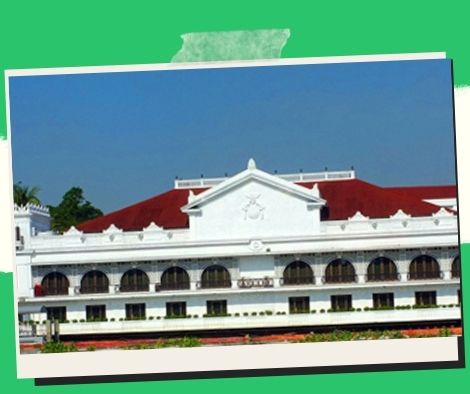
Duterte endorses the use of nuclear power in the Philippines’ energy mix.
MANILA, Philippines — President Rodrigo Duterte issued Executive Order (EO) 164, which now includes nuclear power’s potential in the country’s energy mix.
EO 164 was signed by the Chief Executive on February 28 and was released on Thursday.
In a news conference, Department of Energy (DOE) Undersecretary Gerardo Erguiza Jr. said, “This policy marks the beginning of the national nuclear power program.”
The country “must safeguard the peaceful use of nuclear technology based on essential concepts of public safety, national security, energy self-sufficiency, and environmental sustainability,” according to the new policy.
Following the proposal of the Nuclear Energy Program Inter-Agency Committee (NEP-IAC), which completed a pre-feasibility study and public consultation on the matter, Duterte issued the policy.
Based on the experience of highly developed countries, the Chief Executive has acknowledged that nuclear power can be a reliable, cost-competitive, and environmentally benign source of energy through EO 164.
“In order for the country to fulfill its long-term growth goals, it must ensure that it has a dependable, secure, sustainable, high-quality, and inexpensive electrical supply, as well as sufficient reserve to ensure that there are no power outages,” the policy stated.
It goes on to say that nuclear energy will help meet the growing need for clean energy, which is expected to grow by 4.4 percent yearly by 2040, resulting in an additional capacity of 68 gigawatts.
The Bataan Nuclear Power Plant (BNPP) was kept in the national nuclear program by the EO, although additional nuclear power plants would be pursued.
During the 1980s, the BNPP was the only nuclear power plant in the region, as the Philippines was one of the first Southeast Asian countries to pursue nuclear power.
However, due to charges of corruption and safety concerns over the usage of nuclear energy, the project was shelved.
According to a 2017 study conducted by Russia’s State Atomic Energy Corporation (ROSATOM), the rehabilitation of the BNPP will cost between USD3 billion and USD4 billion.
The public is likewise becoming more accepting of nuclear energy’s possibilities.
“(A) Public Perception Survey on Nuclear Energy in 2019 found that nearly 79 percent of Filipinos approved or accepted the potential usage or refurbishment of an existing nuclear power plant,” according to the EO.
According to the same poll, 65 percent of respondents support the development of additional nuclear power facilities, and 78 percent are interested in learning more about nuclear energy.
Save/Share this story with QR CODE
Disclaimer
This article is for informational purposes only and does not constitute endorsement of any specific technologies or methodologies and financial advice or endorsement of any specific products or services.
📩 Need to get in touch?
Feel free to Email Us for comments, suggestions, reviews, or anything else.
We appreciate your reading. 😊Simple Ways To Say Thanks & Support Us:
1.) ❤️GIVE A TIP. Send a small donation thru Paypal😊❤️
Your DONATION will be used to fund and maintain NEXTGENDAY.com
Subscribers in the Philippines can make donations to mobile number 0917 906 3081, thru GCash.
3.) 🛒 BUY or SIGN UP to our AFFILIATE PARTNERS.
4.) 👍 Give this news article a THUMBS UP, and Leave a Comment (at Least Five Words).
AFFILIATE PARTNERS

World Class Nutritional Supplements - Buy Highest Quality Products, Purest Most Healthy Ingredients, Direct to your Door! Up to 90% OFF.
Join LiveGood Today - A company created to satisfy the world's most demanding leaders and entrepreneurs, with the best compensation plan today.



 Business Technology, Finance Technology & Information Technology
Business Technology, Finance Technology & Information Technology





